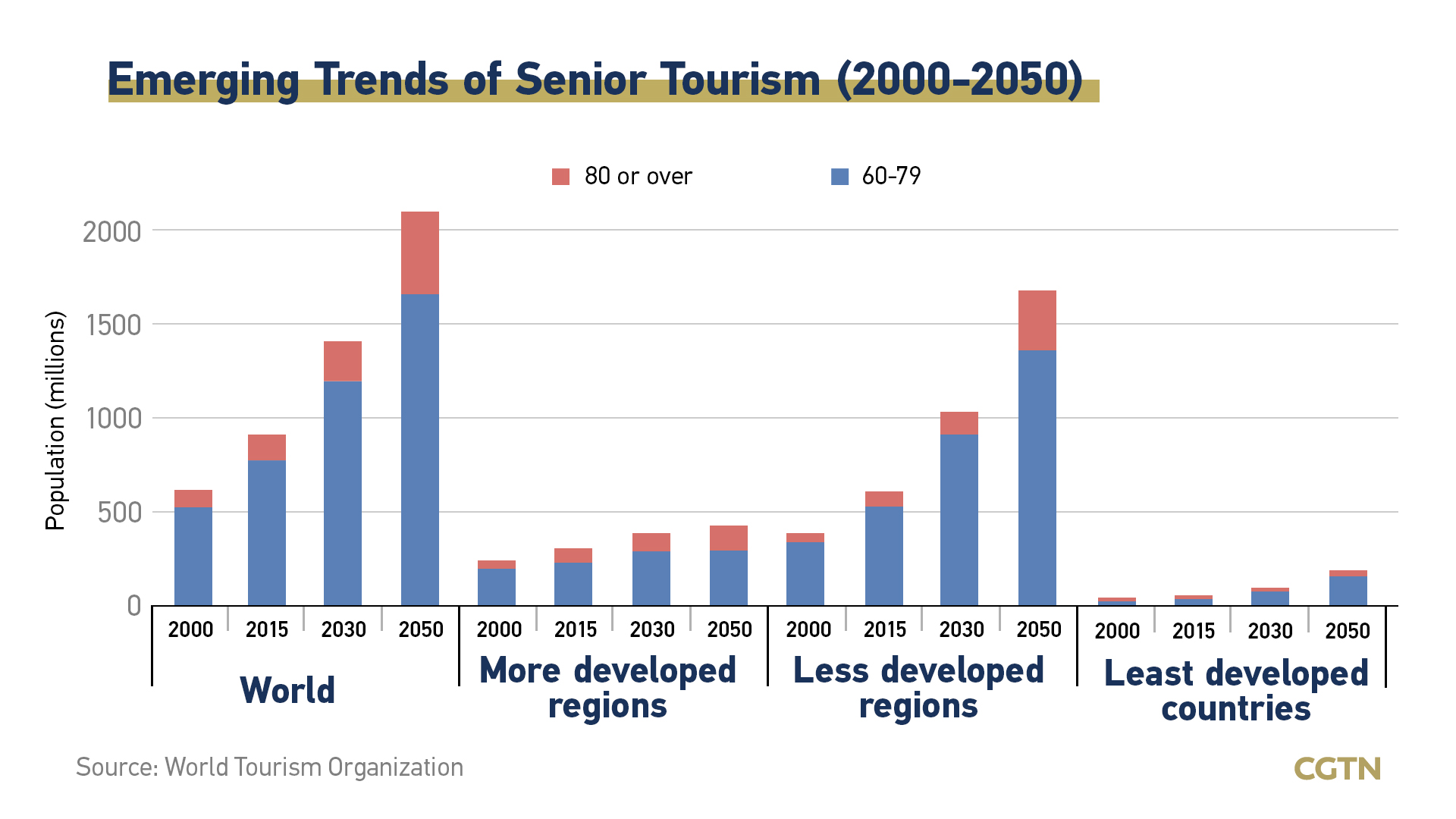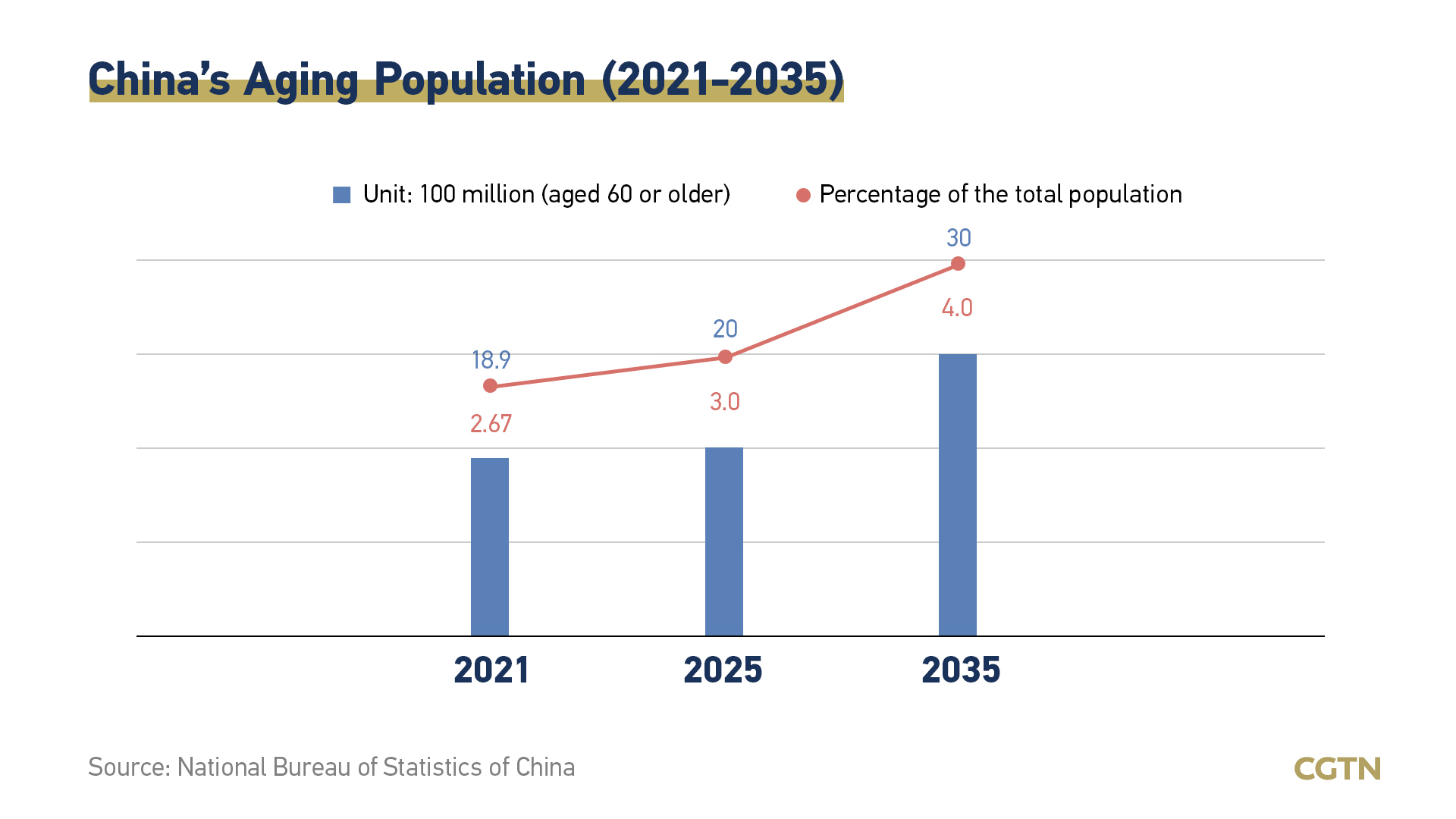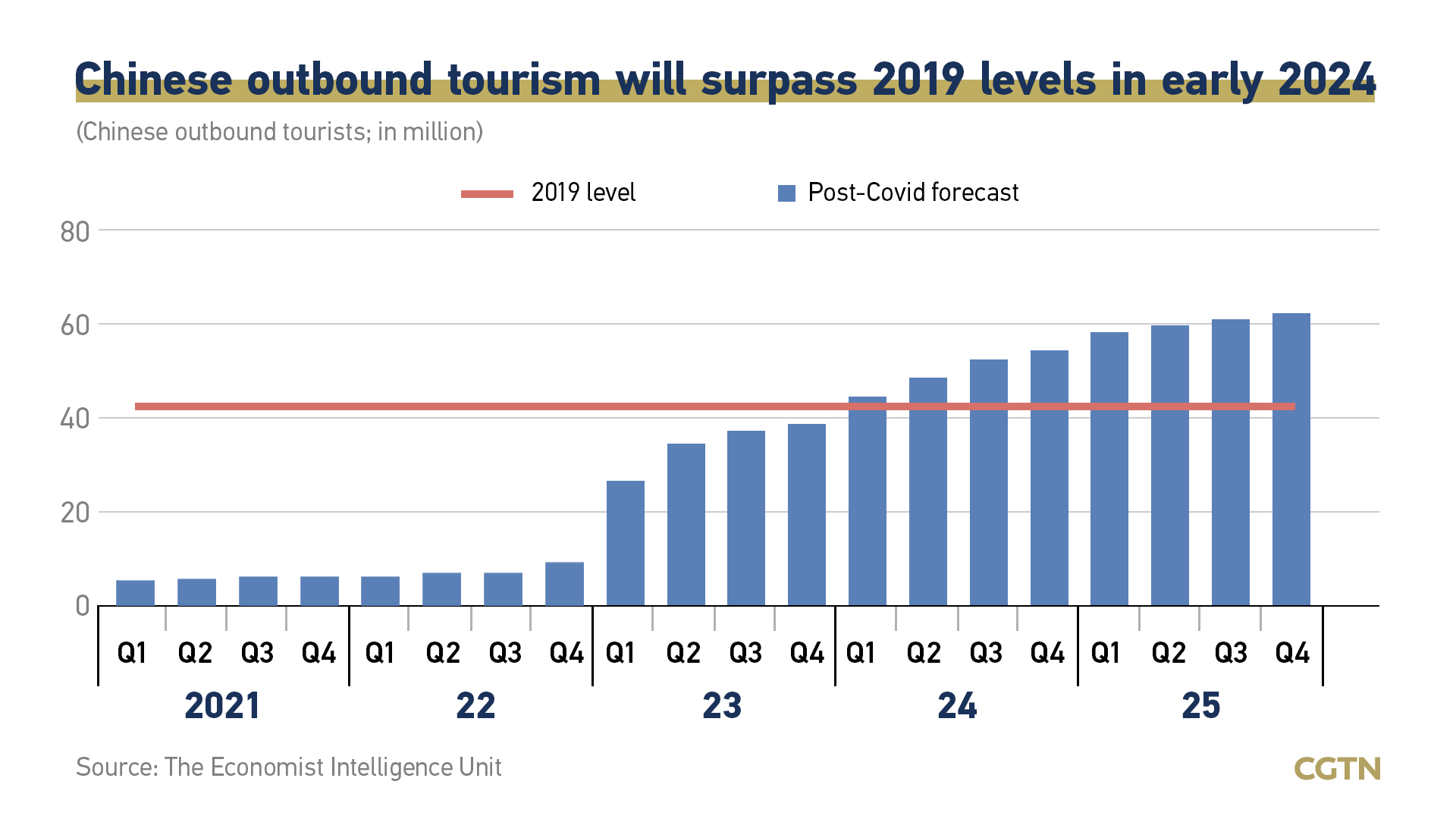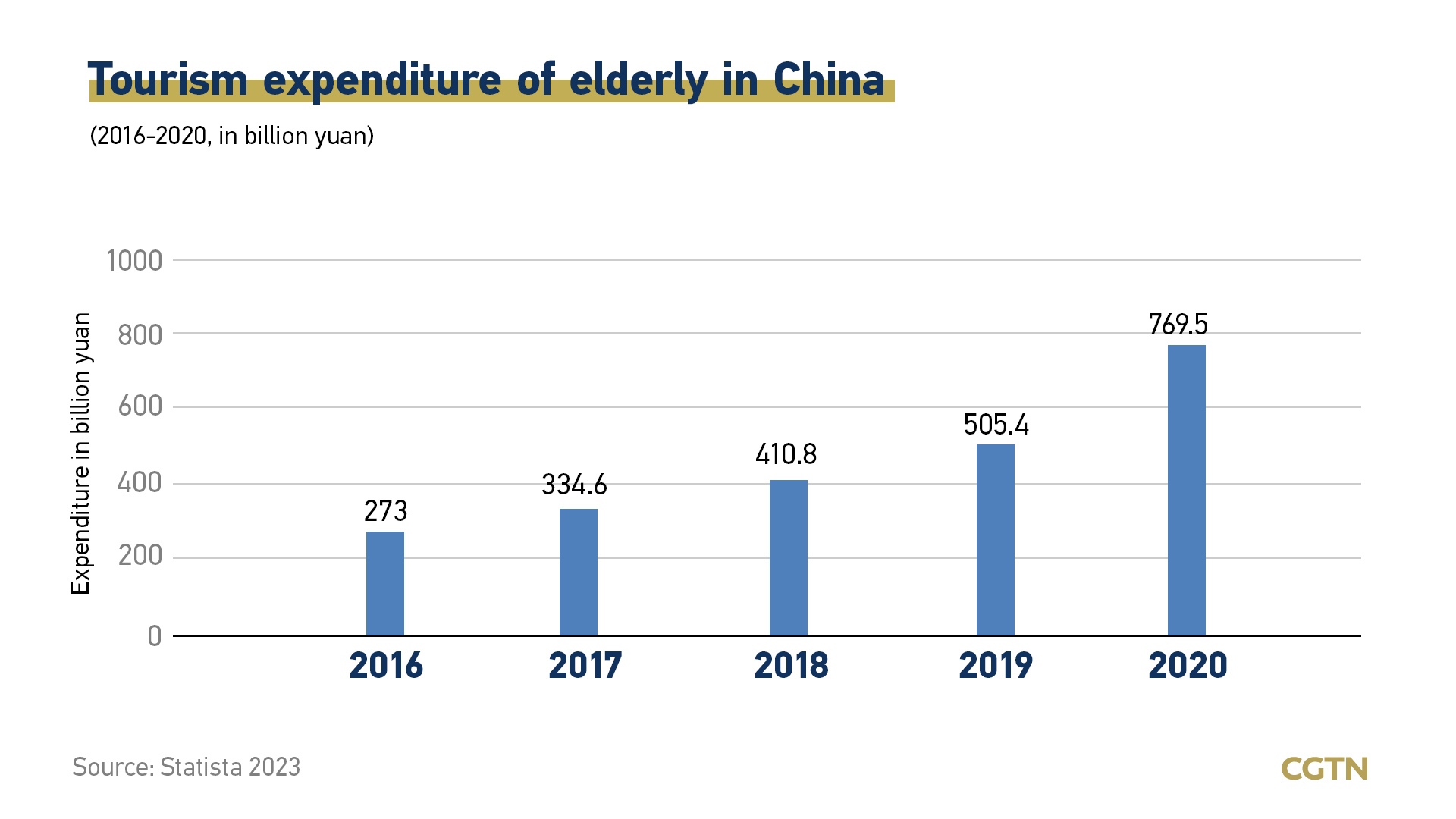
Being a country where great importance is placed on respecting elders, China is already popular with senior travelers. /CFP
Being a country where great importance is placed on respecting elders, China is already popular with senior travelers. /CFP
Editor's note: Hu Fangli is a PhD candidate in Public Health and Tourism, Centre for Precision Health, Edith Cowan University, Australia. Wen Jun is a Lecturer in Tourism and Service Marketing at the School of Business and Law, Edith Cowan University, Australia. Abhishek G. Bhaya is a Beijing-based senior journalist and international affairs commentator at CGTN. The article reflects the authors' opinions, and not necessarily those of CGTN.
China is witnessing a massive boom in both domestic and outbound tourism following the lifting of COVID-19 travel restrictions. With its aging population steeply rising, China is also at the cusp of becoming a top destination for elderly-friendly tourism in the coming years.
As low fertility and increasing longevity drive rapid aging, the world is set to become a super-aging society in the coming decades triggering unforeseen growth in the global senior tourism segment. For instance, in 1999, over 593 million international travelers were elderly people (those aged 60 years and above), which accounted for around a third of holiday spending. This number is projected to reach two billion trips annually by 2050, according to the World Tourism Organization.

It is estimated that seniors will comprise nearly a quarter of the world's population by 2050, compared to only 10 percent in 2000. Meaning that they will be responsible for more holiday spending in the future than all of the younger age groups combined. China, with its demographic composition, will be among the largest contributors to global senior tourism.
China's aging level is already above the global average. The country is approaching a "moderately aging" scenario, in which 20 percent of its population is comprised of elderly people. According to data from National Bureau of Statistics of China, by 2021, the number of elderly people reached 267 million, about 18.9 percent of the country's population. These figures are expected to exceed 300 million and 20 percent in 2025 and 400 million and 30 percent in 2035, respectively.

Meanwhile, the appetite for tourism in China remains robust as witnessed in recent weeks. More than 300 million trips were taken across China during the Spring Festival holidays, aptly known as the Golden Week. And, on Monday, China resumed outbound group travel after a three-year pandemic-induced suspension, which is expected to give a much-needed boost to global tourism.
Before the pandemic, China had emerged as the world's largest outbound tourism market. In 2019 alone, about 155 million Chinese tourists spent $245 billion traveling across the world, according to a study by New York-headquartered consulting firm Oliver Wyman. If the recent tourism surge is any indication, China is set to reclaim that slot and, in good part, due to a large number of senior travelers from the country.

Feasible paths to healthy aging
Although China's population aging began somewhat late, it is now large-scale, fast, and regionally uneven. Negative domestic population growth in 2022 pointed to a complex situation: the country is facing issues with pensions, consumption, economic crisis, and so on. In preparation for this demographic shift and its negative impacts, China has explored feasible paths to healthy aging since 1999, when the country officially became an aging society.
Two decades of effort have brought China fruitful achievements in healthy aging; the country has mapped out a timely and evidence-based path. Addressing population aging is a national strategy. China has established a system in which population, social, and economic policies are intertwined. Given general patterns of population development and aging, two broad strategies have prevailed: deferral strategies and adaptation strategies.
Deferral strategies aim to slow population aging as much as possible. China has loosened birth restrictions, from the one-child policy to the three-child policy, to encourage more births. It has also assembled a maternity support policy package covering education, housing, health care, employment, and so forth. Because population aging is inevitable, China is also pursuing adaptation strategies to build a strong economic foundation and an aging-friendly social environment.

China is pursuing adaptation strategies to build a strong economic foundation and an aging-friendly social environment. /CFP
China is pursuing adaptation strategies to build a strong economic foundation and an aging-friendly social environment. /CFP
On the one hand, China has striven to develop a high-quality social security system to care for the elderly. The country's multi-tiered, multi-pillar old-age insurance structure includes basic endowment insurance, an enterprise annuity, and individual savings–funded endowment insurance. China has the world's largest social security network as of 2022 – 95 percent of residents had basic medical insurance, and basic endowment insurance covered 1.04 billion people.
The country has also developed an old-age service system that is based on home care, supported by community care, supplemented by institutional care, and combined with medical care. Societal infrastructure has been retrofitted to be elderly-oriented; technology is being adopted to promote "smart" senior care as well.
On the other hand, China has harnessed the synergy between aging and industry to give the elderly a sense of worthiness. For instance, people aged between 60 and 69 years accounted for 55.83 percent of China's total 60-plus-year-old population in 2020, and many were able and willing to work. China has tapped its senior human resources through retirement age delays and the "Silver Age Action" campaign. A silver economy has also unleashed the aging population's consumption potential while offering products and services to market segments such as the poor, the masses, and high-income earners.
Senior tourism a key contributor to the silver economy
Healthy aging is a global initiative that requires a concerted effort across social sectors. Tourism, as a pillar industry of the world economy, is an integral part of this complex ecosystem. Relatively more leisure time and disposable income make the aging population an important segment. Especially in China, senior tourism has become a key contributor to the silver economy and a potential impetus for post-pandemic tourism recovery.
Seniors accounted for more than 20 percent of all Chinese tourists as of 2020. Their travel consumption grew by 23 percent annually between 2016 and 2020. Senior Chinese tourists' total consumption surpassed 700 billion yuan (about $103 billion) in 2021 and is projected to top 2.4 trillion yuan ($350 billion) by 2050.

Tourism may also serve as a promising non-pharmacological therapy to improve people's health and well-being. This prospect is particularly meaningful for aging populations, who are vulnerable to sub-optimal health and non-communicable diseases. Productive travel experiences – including physical activity, positive emotions, socialization, and healthy eating – can play a part in health promotion.
The fact is that the world is getting older. Being a country where great importance is placed on respecting elders, China is already popular with senior travelers. With powerful policy and financial support, China is committed to cultivating senior tourism and improving service quality to meet the elderly's needs and protect their rights.
China has taken numerous steps to create an aging-friendly society. It has also made efforts to develop elderly-friendly infrastructures and features such as wheelchair-accessible ramps and lifts at popular tourist attractions and heritage sites. China also offers a range of cultural activities such as learning calligraphy or traditional art, learning basic Chinese cooking, a variety of cultural and art performances and shows that are very popular among elderly travelers.
The "China model" of preparing to embrace an aging population is the key to elderly-friendly tourism and should serve as an inspiration for other countries.
(If you want to contribute and have specific expertise, please contact us at opinions@cgtn.com. Follow @thouse_opinions on Twitter to discover the latest commentaries in the CGTN Opinion Section.)